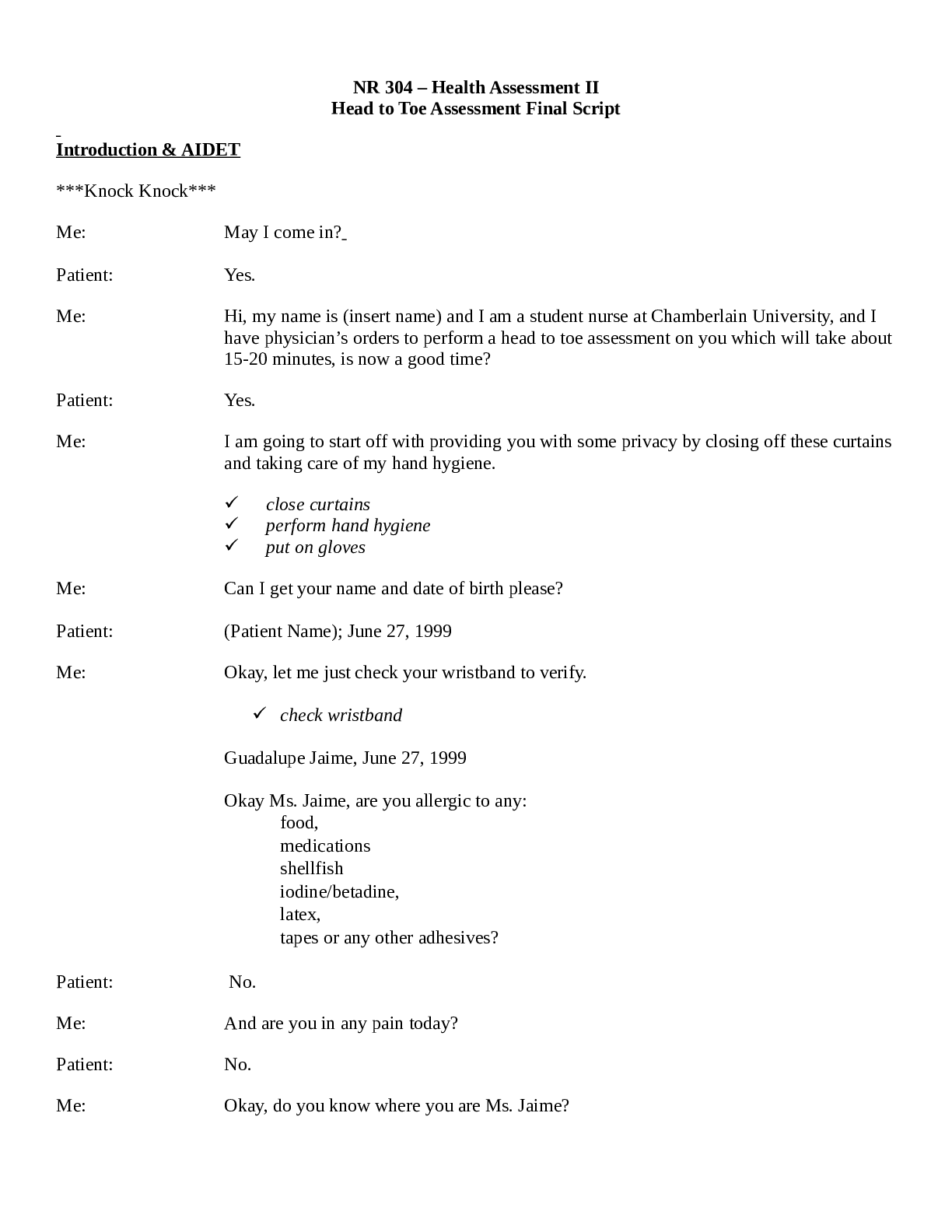*NURSING > STUDY GUIDE > Chamberlain College of Nursing NURSING NR 304NR 304 Final Exam Concepts 2 (All)
Chamberlain College of Nursing NURSING NR 304NR 304 Final Exam Concepts 2
Document Content and Description Below
Identify steps of Nursing Process: Evaluation o Reassessment of patient o Have goals been met? Identify tasks in Nursing Process: Diagnosis o Compiling data to determine NANDA diagnosis fo... r patient o Cluster data, discard irrelevant information Types of Databases: Problem Centered o Limited or short-term problem o Concerns one problem, complex, or body system o Used in all settings Chapter 9: Identify Components of the General Survey o Study of the whole person o Begins upon entry to the room o Physical appearance Age: person appears their stated age Sex: development is appropriate for sex and age; if transgender note stage of transformation Level of consciousness: alert and oriented to person, place, time, and situation Skin color: color tone even, pigmentation varies, skin intact, note tattoos and piercings Facial features: note symmetry Overall appearance: acute distress? o Body structure Stature: height in normal range for age/genetics? Nutrition: weight within normal range for height/build? Symmetry: body parts equal bilaterally? Posture: stand erect comfortably? “plumb line” through anterior ear, shoulder, hip, patella, ankle Exceptions are toddler lordosis and aging person with kyphosis Position: sits comfortably with arms relaxed at sides and head towards examiner Body build, contour: Arm span = height Crown to pubis ≈ pubis to sole Obvious physical deformities? o Mobility 2 Gait: feet shoulder width apart, foot placement accurate, walk smooth and even, maintain balance without assistance, symmetric arm swing present Range of motion: full mobility for each joint; movement is deliberate, accurate, smooth, coordinated; no involuntary movement o Behavior Facial expression: maintains eye contact (if culturally appropriate), expressions appropriate to situation Mood and affect: person comfortable and cooperative, interacts pleasantly Speech: articulation clear and understandable Speech pattern: fluent with even pace, conveys ideas clearly, word choice appropriate for culture/education, communicates easily by themselves or with interpreter Dress: clothing appropriate to climate and culture, clean and fits body Personal hygiene: clean and groomed appropriately for age, occupation, socioeconomic group o How does the patient interact with others? Chapter 10: Differentiate the grading of Pulse Force o Three-point scale 3+ = full, bounding pulse 2+ = normal 1+ = weak, thready 0 = absent Identify Hypotension Occurrences and Rationales o Acute myocardial infarction decreased cardiac output o Shock decreased cardiac output o Hemorrhage decrease in total blood volume o Vasodilation decrease in peripheral vascular resistance o Addison disease (hypofunction of adrenal glands) decrease in circulating aldosterone Recognize how to Count Respirations o Do not tell patient you are counting respirations o Continue for 30 seconds after assessing pulse o 30 seconds multiply by 2, or full minute if you suspect abnormality Recognize the Effects of Smoking on Blood Pressure o Contributes to hypertension Chapter 11: Identify Physiologic Changes: Acute Pain Responses o Guarding o Grimacing 3 o Vocalizations such as moaning o Agitation o Restlessness o Stillness o Diaphoresis o Change in vital signs Chapter 13: Recognize the ABCDEF of Skin Lesions o Asymmetry o Border irregularity o Color variation o Diameter greater than 6mm o Elevation or evolution o Funny looking Identify how to Assess for Clubbing and its indications o Have patient make a heart with their hands and look for gap between nails o Profile sign: view profile of index finger, nail base should be about 160 degrees Recognize how to Detect Color Changes in Light and Dark Skin o Light skin Pallor: generalized or localized pallor Cyanosis: dusky blue, nail beds dusky Erythema: red, bright pink Jaundice: yellow in sclera, hard palate, mucous membranes o Dark skin Pallor: yellow-brown skin yellow-brown, black skin ashen gray Cyanosis: dark but dull, lifeless; check conjunctiva, oral mucosa, nail beds Erythema: purplish tinge; palpate for increased warmth with inflammation Jaundice: junction of hard and soft palate, palms Recognize the Characteristics of Pressure Injuries: Stage I, II, III, IV o Stage I Non-blanchable redness o Stage II Partial-thickness skin loss Looks like open blister with red-pink bed o Stage III Full-thickness skin loss Extends into subcutaneous tissue, resembles a crater See subcutaneous fat, granulation tissue, and rolled edges o Stage IV Full-thickness skin/tissue loss All skin layers and supporting tissue 4 Exposes muscle, tendon, or bone May show slough or eschar Rolled edges Tunneling Chapter 14: Identify Neck Assessment Techniques: ROM o Ask patient to touch chin to chest, turn head right and left, try to touch each ear to shoulder (without elevating shoulders), extend head backwards o Note limitations in movement Identify Manifestations of Hypothyroidism o Goiter o Eyelid retraction o Exophthalmos Chapter 18: Identify Clinical Manifestations of Breast Cancer o Discomfort o Inverted nipple o Lumps o Nipple discharge Identify the Complications of Mastectomy o Bleeding o Infection o Pain o Swelling in arm o Shoulder pain or stiffness o Numbness under arm from lymph node removal Chapter 19: Identify inspection techniques for the Thorax and Lungs o Note shape and configuration of chest wall o Spinous process in straight line o Thorax symmetric, elliptical shape, downward sloping ribs o Assess skin color and condition o Assess position person takes to breathe Describe Adventitious Breath Sounds: Wheezes, Crackles o Wheezes High pitch musical squeaking polyphonic [Show More]
Last updated: 2 years ago
Preview 1 out of 13 pages
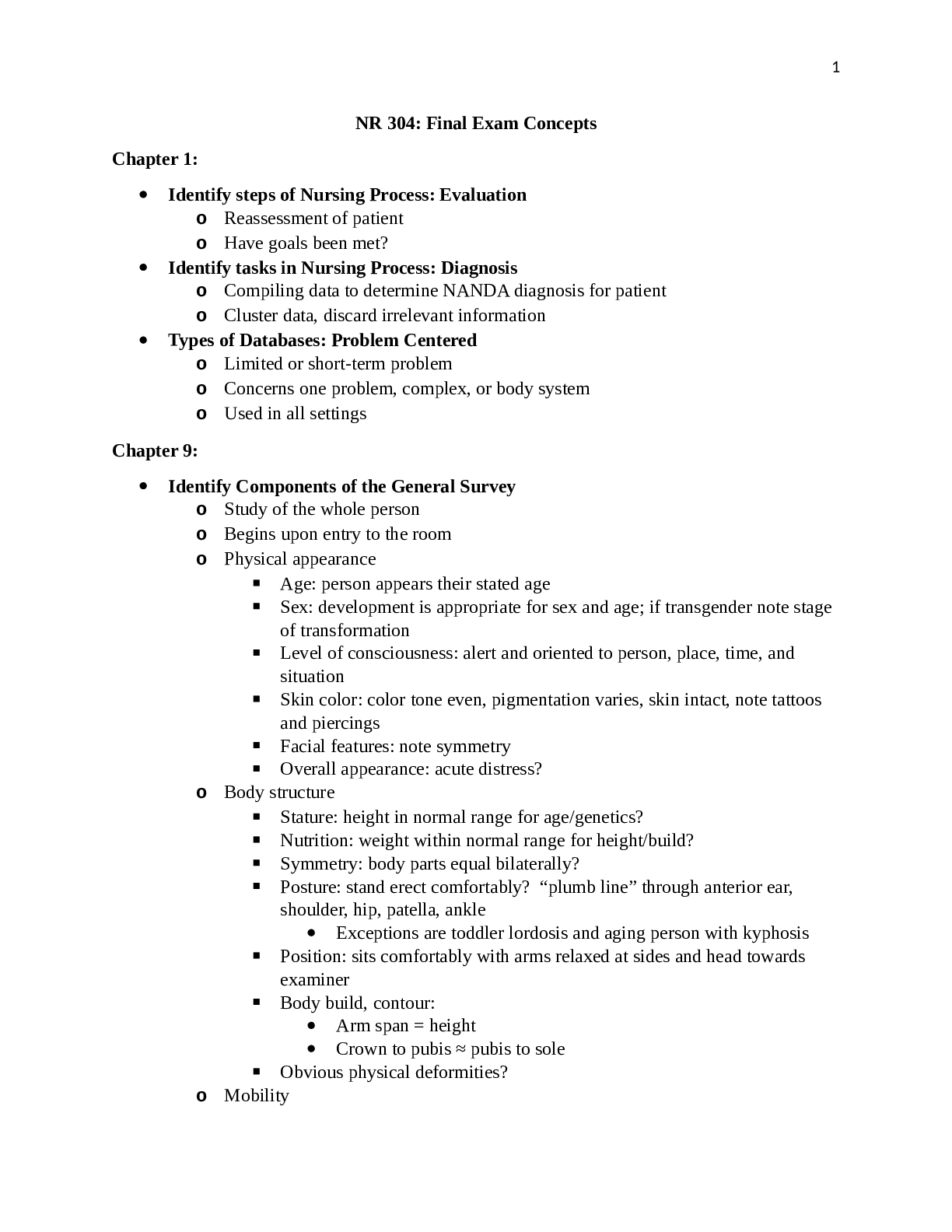
Buy this document to get the full access instantly
Instant Download Access after purchase
Buy NowInstant download
We Accept:

Reviews( 0 )
$9.50
Can't find what you want? Try our AI powered Search
Document information
Connected school, study & course
About the document
Uploaded On
Aug 21, 2021
Number of pages
13
Written in
Additional information
This document has been written for:
Uploaded
Aug 21, 2021
Downloads
0
Views
81



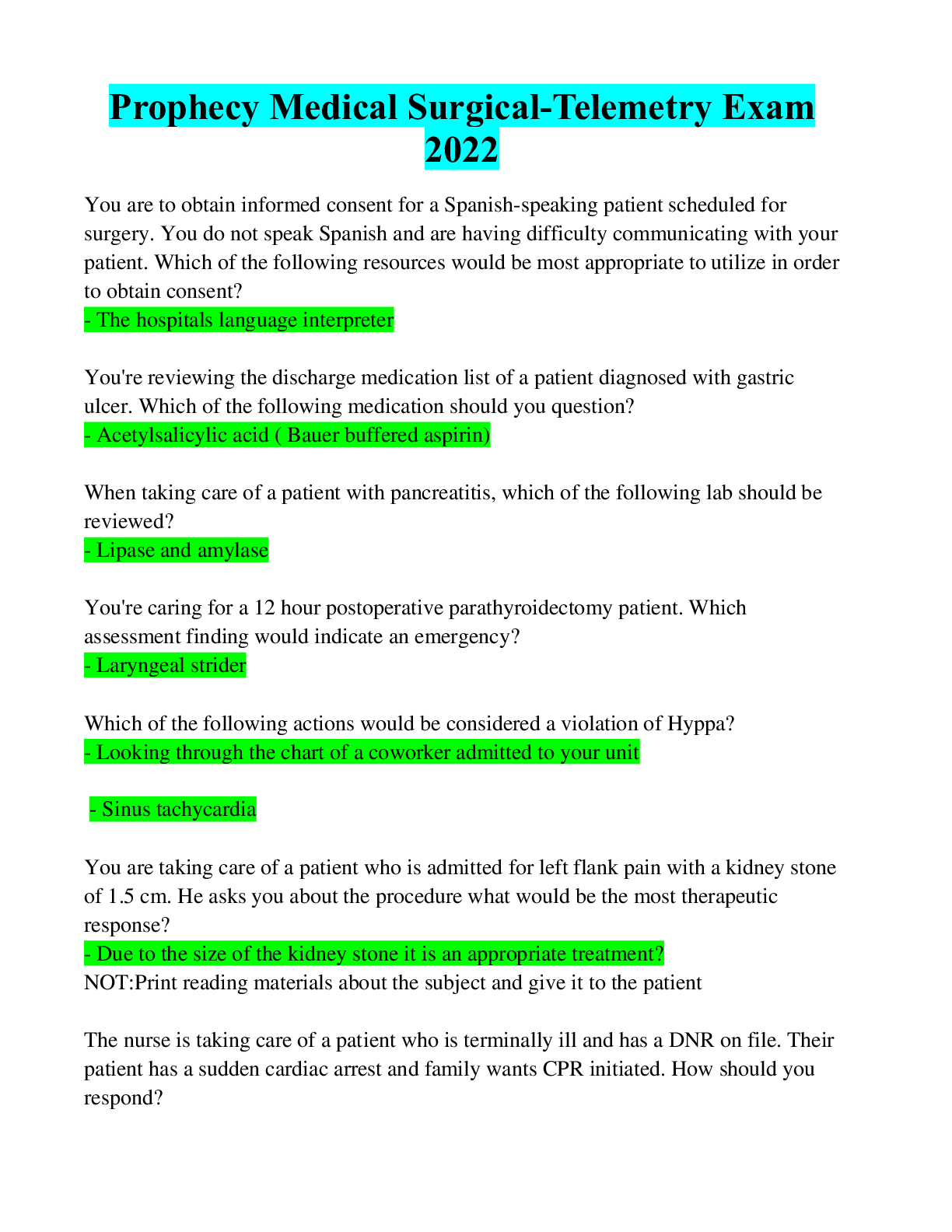


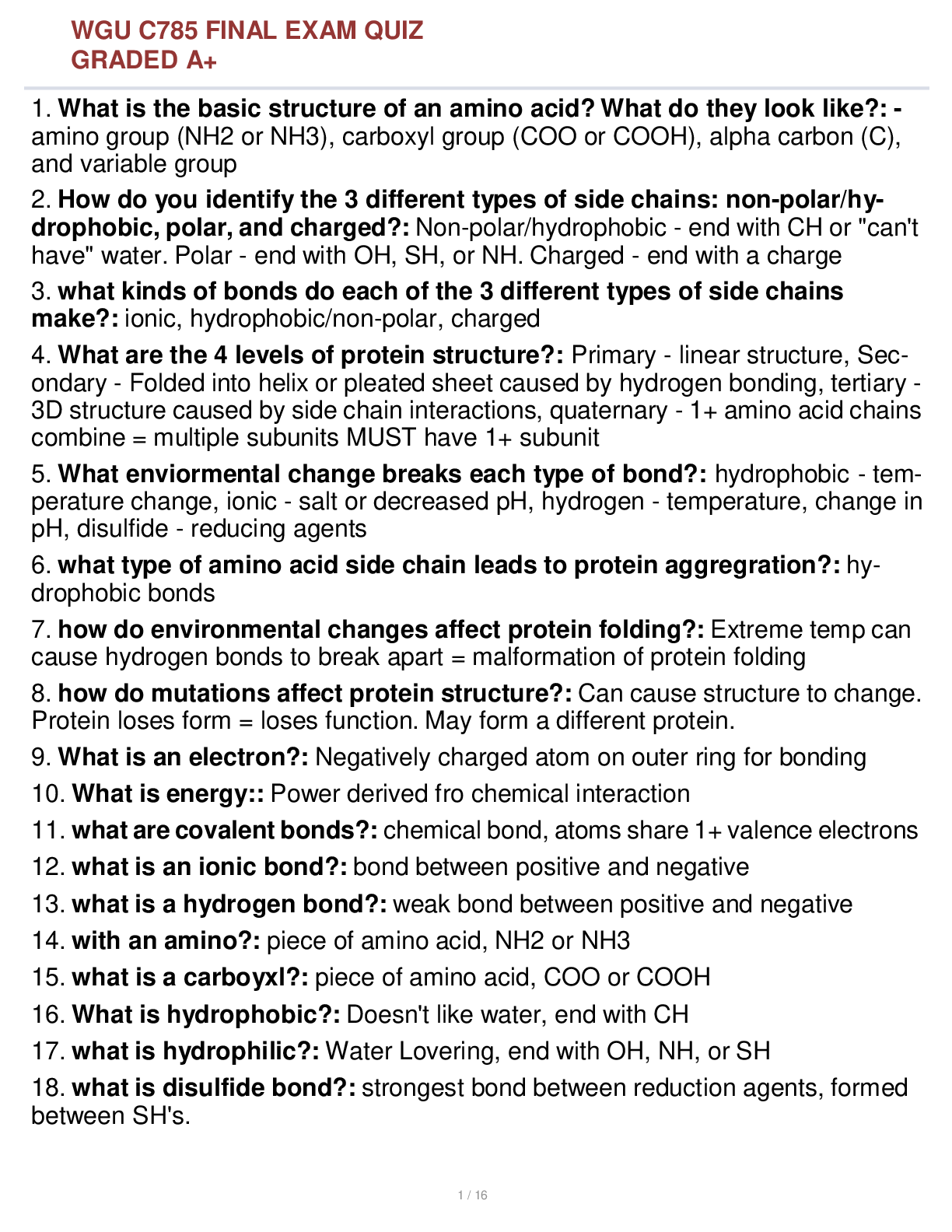
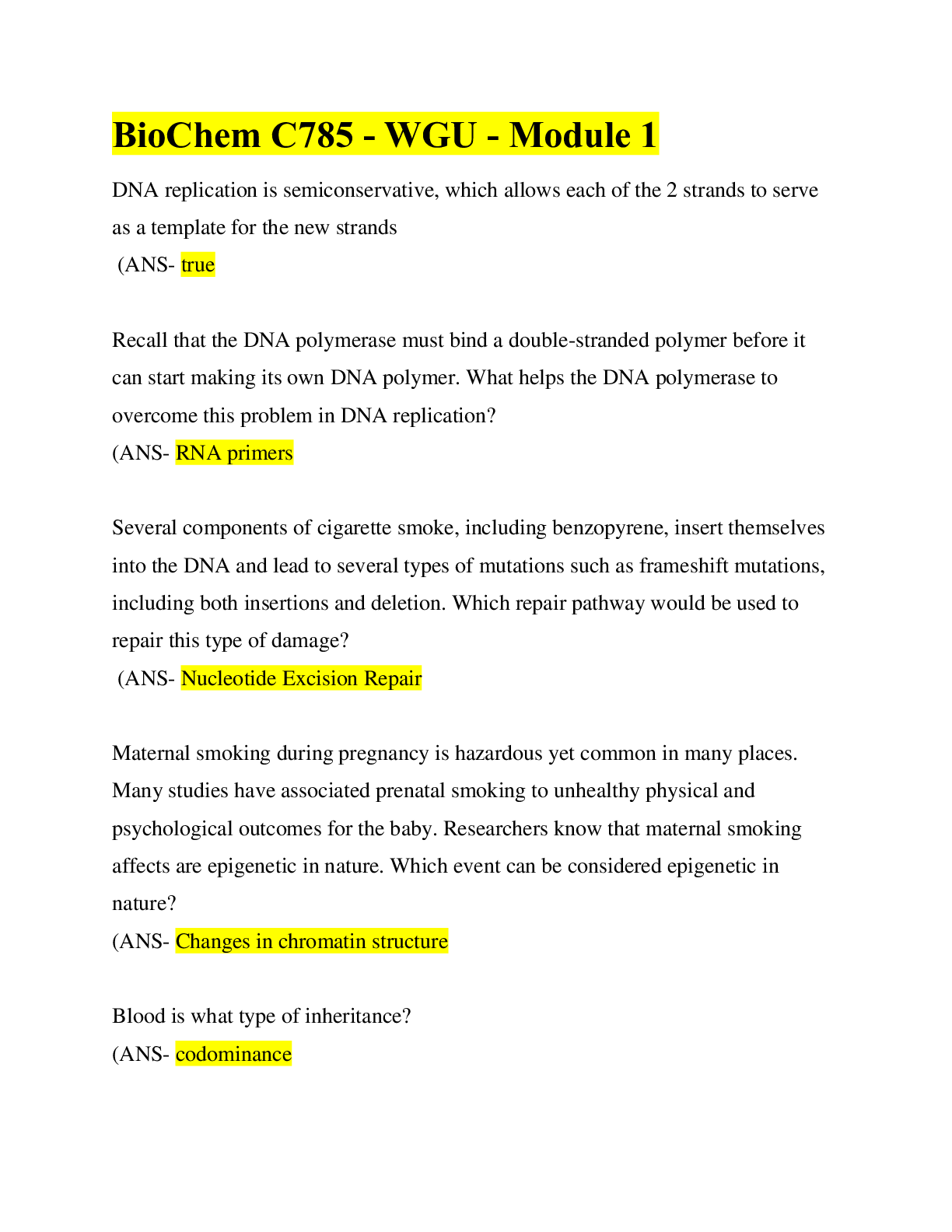
.png)

.png)

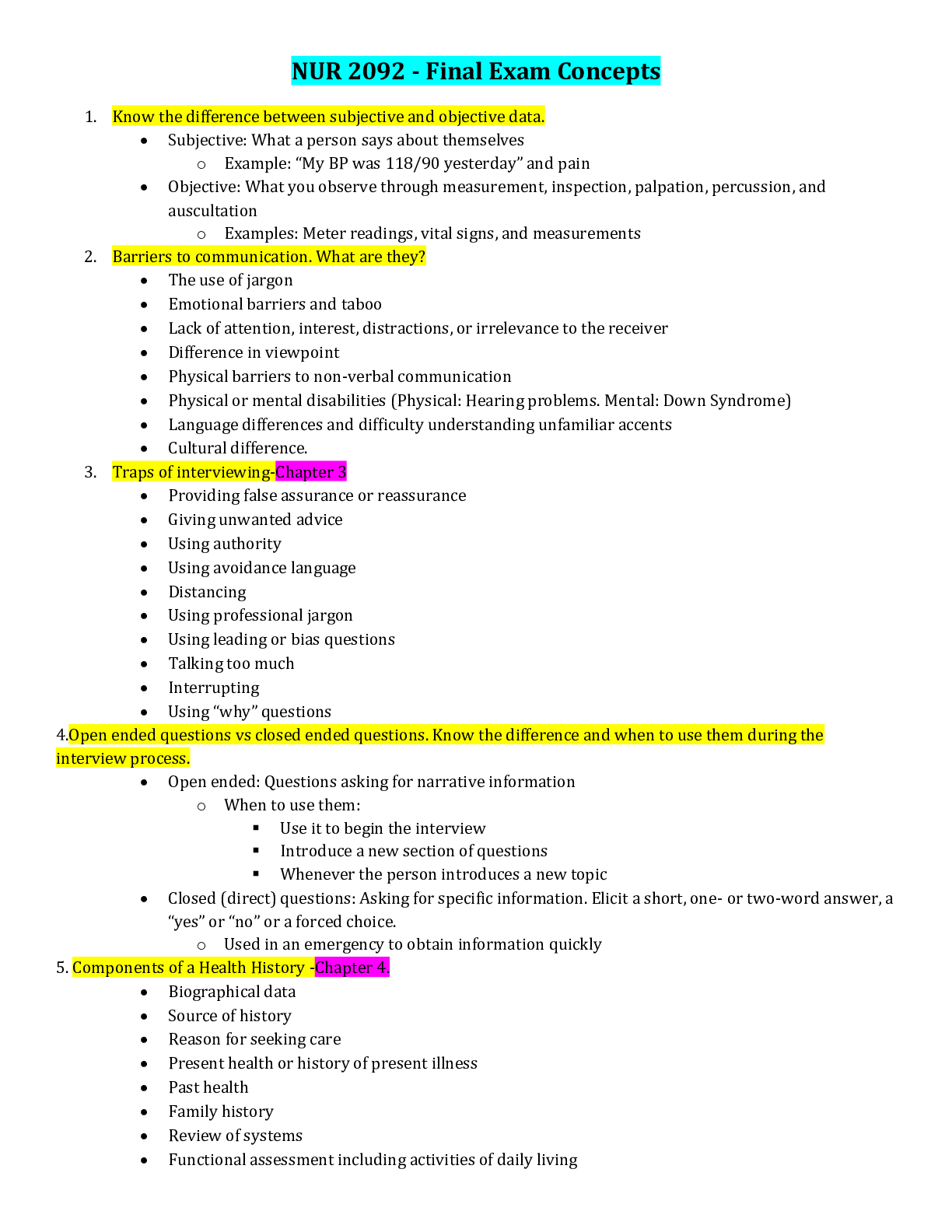

.png)

